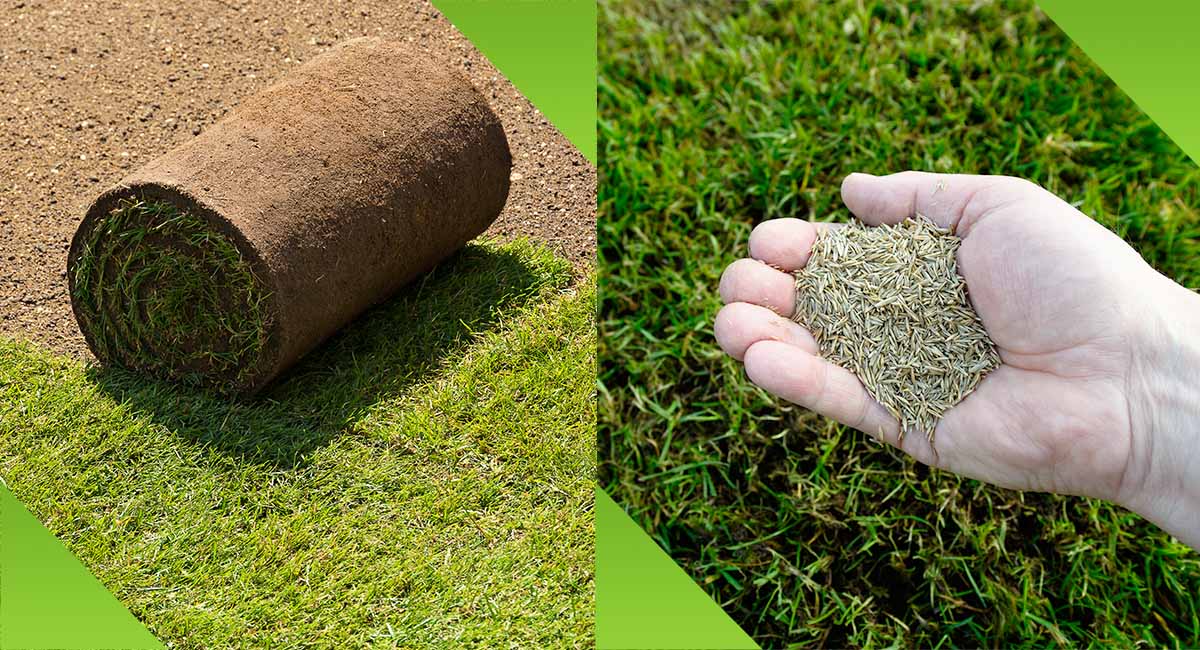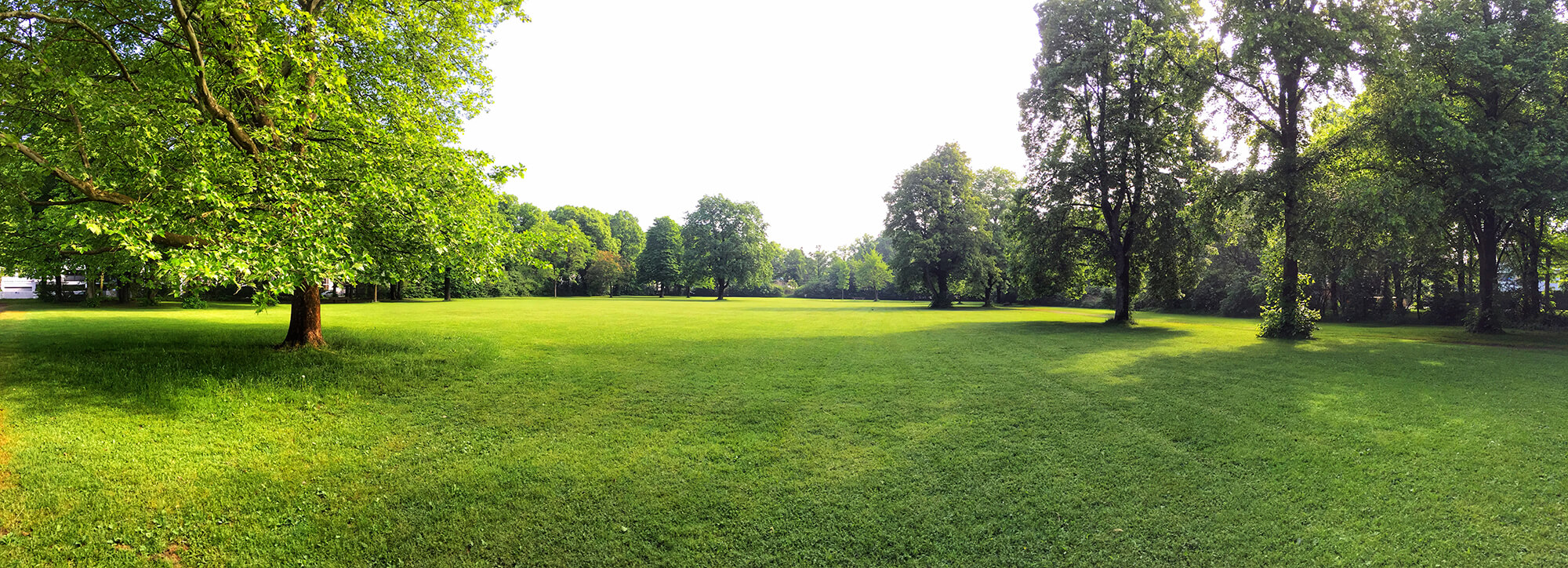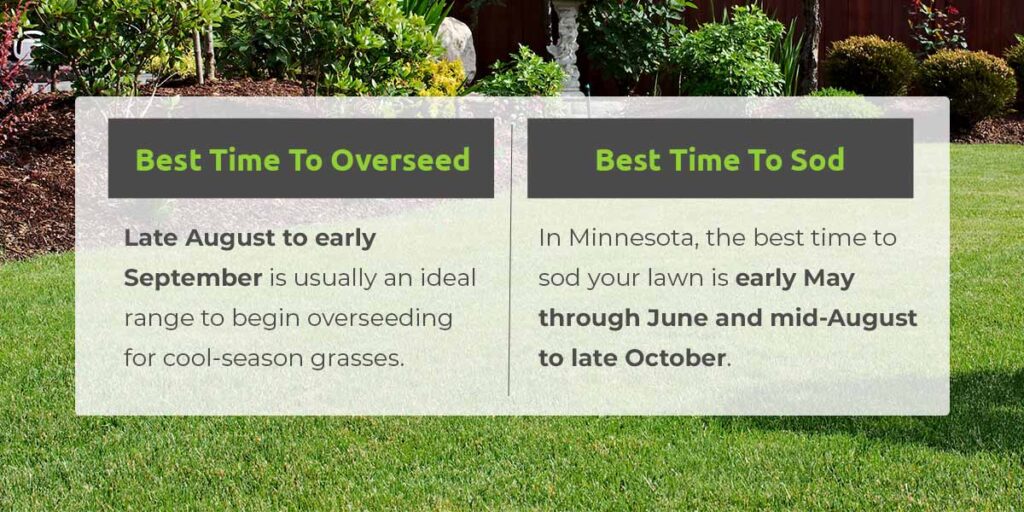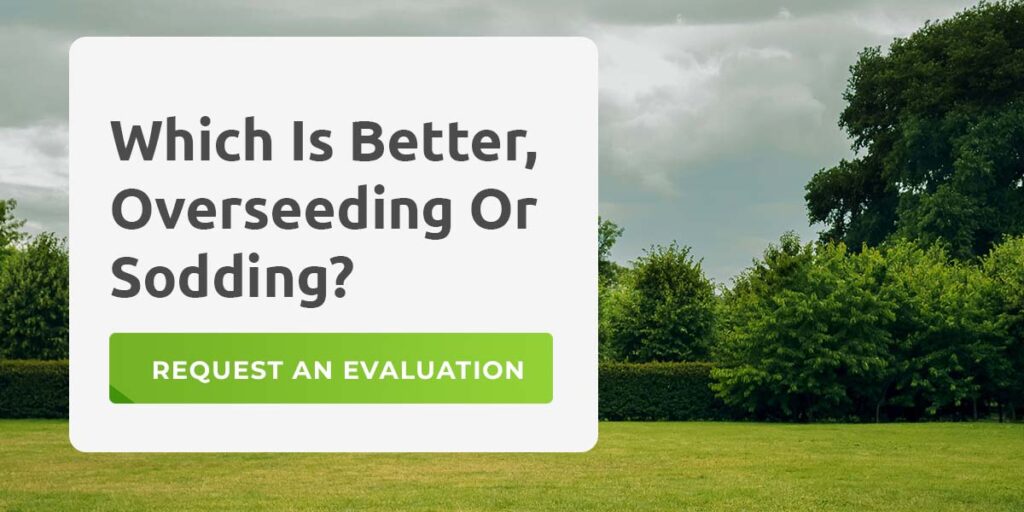
Sodding and overseeding are popular techniques to encourage spring growth — but which one is right for your lawn care needs? They both offer benefits depending on your preferences and budget, so let’s take a deeper look into these two methods and how they work to beautify your lawn.
What Is Overseeding?
Overseeding is adding new grass seed to areas of your lawn where signs of thinning are becoming very apparent. It enables you to thicken the grass you already have to create a full, lush lawn for the next spring season.
A lawn may be a good candidate for overseeding if it looks old and needs to be revitalized. Overseeding can also help lawns that are disease- or insect-prone and require increasing amounts of water or fertilizer. Overseeding is a great way to introduce new assortments of turfgrass into a mature lawn. You can plant new grass varieties while preserving the soil and improving an older lawn’s ability to better withstand disease, traffic, drought, or insects.
Overseeding is a great and inexpensive way to remedy thinning grass and enhance its density. It works well for cool-season grasses, such as:
- Kentucky Bluegrass
- Fescue
- Ryegrass
Overseeding vs. Reseeding
Overseeding focuses on improving your existing lawn. You add new grass seed on top of what you have to fill out its appearance. Reseeding is when you start fresh and plant new seed in bare dirt. You may have an empty yard to fill, or you may decide to kill an existing lawn of weeds and small grass patches to help your lawn grow back full and green.
When’s The Best Time To Overseed?
You should overseed your lawn late in the year to get your lawn ready to sprout new and beautiful green grass come spring. Late August to early September is usually an ideal range to begin overseeding for cool-season grasses. Even if your grass looked amazing this summer, after a hot and harsh season, it will need to be replenished to ensure your lawn looks great again next year.
For maximum results, overseeding works best when combined with lawn aeration, which is the process of pulling out many small chunks of soil to help your lawn breathe and take the seed better. Schedule a fall lawn maintenance with a professional lawn service before the cold weather sets in and ends the overseeding season. Your spring grass will only turn out as envisioned with this important aeration step.
What Is Sodding?
Sodding is when you physically cover all of your lawn with a real grass outer layer or a piece of grass turf. The outer layer will weave itself into your current grass permanently over a period of time.
Laying down sod offers several benefits, including:
- Instant curb appeal: Brand new properties that only have dirt all around them may need instant green and lush grass to help sell the property.
- New life to an existing lawn: Sod can be added to a lawn that already has grass on it but has lost its luster and is badly thinned.
- Low maintenance: Sod has already been treated and seeded properly, making it “grass on the go” that is always ready to be laid down.
When’s The Best Time To Sod?
In Minnesota, the best time to sod your lawn is early May through June and mid-August to late October. Cool-season grasses grow rapidly in the spring and fall when the soil is warm — the mid-50s is an ideal soil temperature range. Laying sod down during these growth times will help the new grass grow well and knit quickly with the soil surface.
Be mindful not to lay sod during an extended drought, even with an irrigation system. The cycles of too-wet and too-dry soil conditions can stress the new sod and affect its performance.
Preparation Work for Sodding
Laying down sod may seem like it takes less time than overseeding and aeration, but the prep work involves cutting the sod rolls to fit your yard. This time and labor-intensive task can take about as much time as the overseeding process.
The cutting, shaping and laying down of the sod properly is very important. For your new sod to grow the way it was intended, it needs to make contact with your soil so it can root properly and be sturdy. You can lay down sod over thin grass, but for maximum results, sod should only be added if your lawn is super thin or in very bad shape.
If your yard is in decent shape or has thicker grass, you may have to buy extra dirt to spread over your entire lawn and then lay the sod on top of the dirt. The extra dirt layer will help the sod take root and be strong. You may also need to spread extra topsoil before sodding if you are building a yard from scratch. The existing soil may have been compacted or damaged by construction, so the new soil can help the sod to thrive.
Which Is Better, Overseeding Or Sodding?
The truth is that the right lawn improvement method for your yard depends on the state of your existing grass and how much money you want to devote to the process of reviving your lawn. Overseeding and aeration combined are generally cheaper than sodding an entire lawn, but correct sodding could get you the results you’re looking for much faster.
If you would like help determining if your lawn is a better candidate for overseeding or sodding, the experienced lawn care experts at Green & Black LLC are here to assist you. We can evaluate the grass on your property and offer recommendations that enable you to revitalize and improve your lawn’s appearance. We also provide a variety of property maintenance services, including aeration, overseeding, and sodding, to help you create and maintain a lush and vibrant lawn.
Please give us a call today! 651-356-9193



